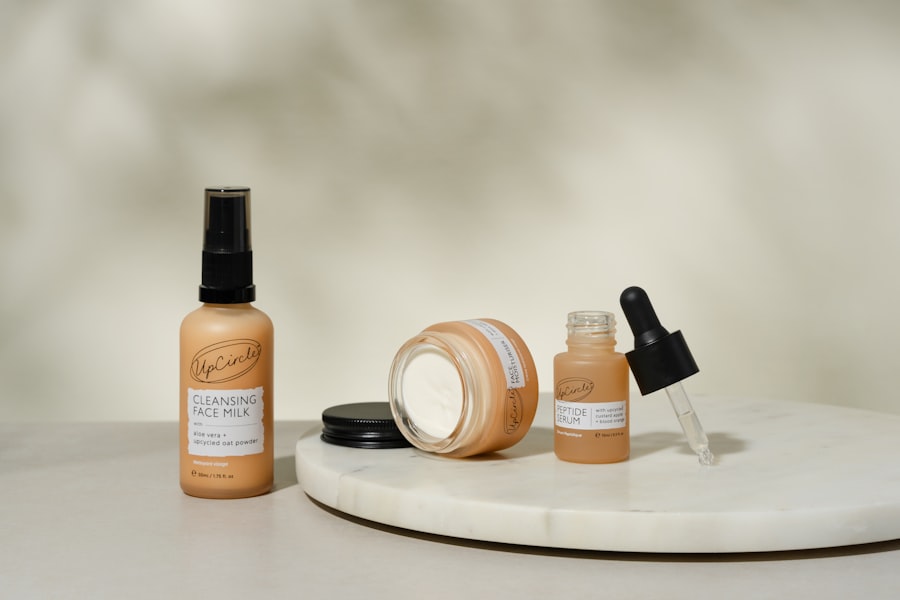After undergoing laser hair removal, it’s essential to grasp what happens to your skin during the recovery phase. The laser targets hair follicles, damaging them to inhibit future hair growth. This process can leave your skin feeling sensitive and slightly irritated.
Understanding this reaction is crucial for ensuring a smooth recovery. You may notice redness or swelling in the treated areas, which is a normal response as your skin begins to heal. It’s important to remember that while these effects are typically temporary, they can vary in intensity from person to person.
As you navigate the post-laser hair removal journey, you should be aware of the timeline for healing. Initially, your skin may feel warm and tender, similar to a mild sunburn. This sensation usually subsides within a few hours to a couple of days.
However, it’s vital to monitor your skin for any unusual reactions. If you experience prolonged discomfort or any signs of infection, such as increased redness or pus, you should consult your practitioner immediately. By understanding the healing process, you can better prepare yourself for the days following your treatment and take proactive steps to care for your skin.
Key Takeaways
- Post-laser hair removal process involves shedding of treated hair and potential redness or swelling
- Sun protection is crucial to prevent hyperpigmentation and sun damage post-treatment
- Proper cleansing and moisturizing helps maintain skin health and prevent dryness or irritation
- Harsh chemicals and exfoliants should be avoided to prevent skin damage and irritation
- Potential side effects like redness, swelling, and itching can be managed with cool compresses and gentle skincare products
- Touch-up treatments may be necessary to achieve desired results and maintain hair reduction
- A healthy skincare routine including gentle products and sun protection is essential for post-laser hair removal care
- Seek professional advice for any concerns or unexpected side effects to ensure proper care and treatment
Importance of Sun Protection
Sun Sensitivity and Complications
After undergoing laser hair removal, your skin becomes more sensitive and prone to sun damage. Exposure to UV rays can lead to complications such as hyperpigmentation or even burns, which can hinder your healing process and affect the results of your treatment.
Protecting Your Skin from the Sun
To prevent these complications, it is essential to apply a broad-spectrum sunscreen with an SPF of at least 30 to the treated areas. You should apply it generously, even on cloudy days or when indoors, as UV rays can penetrate windows. Additionally, wearing protective clothing such as wide-brimmed hats or long sleeves can further shield your skin from harmful rays.
Enhancing Treatment Results
By prioritizing sun protection, you not only safeguard your skin but also enhance the effectiveness of your laser hair removal results. This commitment to sun safety will help ensure that your skin remains healthy and vibrant as it heals.
Proper Cleansing and Moisturizing
Cleansing and moisturizing are fundamental components of your post-laser hair removal skincare routine. After the procedure, your skin may feel dry or tight, making it crucial to use gentle cleansers that won’t irritate the area. Opt for fragrance-free and alcohol-free products that are specifically designed for sensitive skin.
When cleansing, use lukewarm water and avoid scrubbing the treated areas vigorously; instead, gently pat them dry with a soft towel. This approach will help maintain your skin’s natural barrier while promoting healing. Moisturizing is equally important in this phase.
Look for products containing soothing ingredients like aloe vera or hyaluronic acid, which can provide relief and promote healing. Applying moisturizer regularly will not only alleviate dryness but also enhance your skin’s overall appearance as it recovers from the treatment.
By establishing a proper cleansing and moisturizing routine, you’ll create an environment conducive to healing and ensure that your skin remains comfortable throughout the recovery process.
Avoiding Harsh Chemicals and Exfoliants
| Product | Chemical-Free | Exfoliant-Free |
|---|---|---|
| Facial Cleanser | Yes | No |
| Body Wash | Yes | No |
| Moisturizer | Yes | Yes |
In the days and weeks following laser hair removal, it’s crucial to avoid harsh chemicals and exfoliants that could irritate your sensitive skin. Many skincare products contain ingredients like retinoids, alpha hydroxy acids (AHAs), or beta hydroxy acids (BHAs) that can be too aggressive during this healing period. These substances may exacerbate redness or discomfort and could even lead to adverse reactions.
Instead, focus on using gentle, hydrating products that support your skin’s recovery without causing additional stress. Exfoliation is another area where caution is warranted. While regular exfoliation is beneficial for maintaining healthy skin under normal circumstances, it’s best to hold off on scrubs or chemical exfoliants until your skin has fully healed from the laser treatment.
Instead of traditional exfoliation methods, consider incorporating mild exfoliating agents like enzymes found in certain fruits or gentle exfoliating pads designed for sensitive skin once you receive clearance from your practitioner. By steering clear of harsh chemicals and exfoliants during this critical time, you’ll help ensure a smoother recovery and better long-term results.
Managing Potential Side Effects
Managing potential side effects after laser hair removal is an essential part of your post-treatment care plan. While most individuals experience only mild side effects like redness or swelling, some may encounter more significant reactions such as blistering or changes in pigmentation. It’s important to stay vigilant and monitor your skin closely during this period.
If you notice any unusual symptoms or if side effects persist longer than expected, don’t hesitate to reach out to your healthcare provider for guidance. To alleviate common side effects like redness or swelling, consider applying cool compresses to the affected areas for short periods throughout the day. This can help soothe irritation and reduce inflammation.
Additionally, over-the-counter pain relievers such as ibuprofen can be effective in managing discomfort if needed. However, always consult with your practitioner before taking any medication post-treatment. By being proactive in managing side effects, you’ll not only enhance your comfort but also support a smoother healing process.
Following Up with Touch-Up Treatments

Following up with touch-up treatments is an integral part of achieving optimal results from laser hair removal. While many individuals experience significant hair reduction after their initial sessions, some may find that a few stray hairs persist over time. These touch-up treatments are designed to target any remaining follicles that may not have been effectively treated during the primary sessions.
Typically scheduled several weeks after your last treatment, these follow-ups ensure that you maintain smooth skin without unwanted hair regrowth. It’s essential to discuss a personalized follow-up plan with your practitioner based on your individual needs and hair growth patterns. They will assess your progress and recommend the appropriate timing for touch-ups to maximize results while minimizing any potential discomfort.
By committing to these follow-up sessions, you’ll not only enhance the effectiveness of your laser hair removal but also enjoy long-lasting smoothness that aligns with your beauty goals.
Maintaining a Healthy Skincare Routine
Establishing and maintaining a healthy skincare routine is vital for supporting your skin’s recovery after laser hair removal and ensuring its long-term health. Incorporating nourishing products into your daily regimen can help promote healing while preventing future issues such as dryness or irritation. Focus on using gentle cleansers, hydrating moisturizers, and protective sunscreens as foundational elements of your routine.
In addition to these basics, consider integrating serums or treatments that cater specifically to your skin type and concerns once you receive clearance from your practitioner. Ingredients like antioxidants can help protect against environmental stressors while promoting overall skin health. However, always prioritize gentleness in product selection during the initial healing phase.
By committing to a consistent skincare routine tailored to your needs, you’ll not only support recovery but also enhance the overall appearance and resilience of your skin in the long run.
Seeking Professional Advice for Any Concerns
Throughout your post-laser hair removal journey, seeking professional advice for any concerns is paramount. Your practitioner is equipped with the knowledge and expertise necessary to address any questions or issues that may arise during your recovery process. Whether you’re experiencing unexpected side effects or simply want reassurance about the healing timeline, don’t hesitate to reach out for guidance.
Additionally, if you have specific skincare concerns or are unsure about which products are safe to use post-treatment, consulting with a dermatologist can provide valuable insights tailored to your unique situation. They can recommend suitable products and practices that align with your skin type while ensuring optimal healing after laser hair removal. By prioritizing professional advice when needed, you’ll empower yourself with the information necessary for a successful recovery and long-lasting results from your treatment.
Aftercare for laser hair removal on the face is crucial to ensure optimal results and minimize any potential side effects. One helpful resource for learning more about aftercare tips is the article on com/sample-page/’>In Laser Hair Removal’s website.
This article provides detailed information on how to properly care for your skin post-treatment, including avoiding sun exposure, using gentle skincare products, and staying hydrated. By following these aftercare guidelines, you can help maintain the smooth, hair-free results of your laser hair removal treatment on your face.
FAQs
What is aftercare for laser hair removal on the face?
Aftercare for laser hair removal on the face involves taking care of the treated area to ensure proper healing and to minimize any potential side effects.
What are the common aftercare instructions for laser hair removal on the face?
Common aftercare instructions for laser hair removal on the face may include avoiding sun exposure, using gentle skincare products, avoiding picking or scratching the treated area, and keeping the skin moisturized.
How long does it take for the skin to heal after laser hair removal on the face?
The skin typically heals within a few days to a week after laser hair removal on the face. However, individual healing times may vary depending on the person’s skin type and the intensity of the treatment.
Are there any specific products to avoid after laser hair removal on the face?
It is recommended to avoid using harsh skincare products, such as exfoliants or products containing alcohol, immediately after laser hair removal on the face. These products can irritate the skin and interfere with the healing process.
What are the potential side effects of laser hair removal on the face?
Potential side effects of laser hair removal on the face may include redness, swelling, and mild discomfort. In rare cases, there may be temporary changes in skin pigmentation or scarring. It is important to follow aftercare instructions to minimize these risks.
When can I resume my regular skincare routine after laser hair removal on the face?
It is best to wait until the skin has fully healed before resuming your regular skincare routine after laser hair removal on the face. This typically takes a few days to a week, but it is important to follow the specific aftercare instructions provided by your treatment provider.






